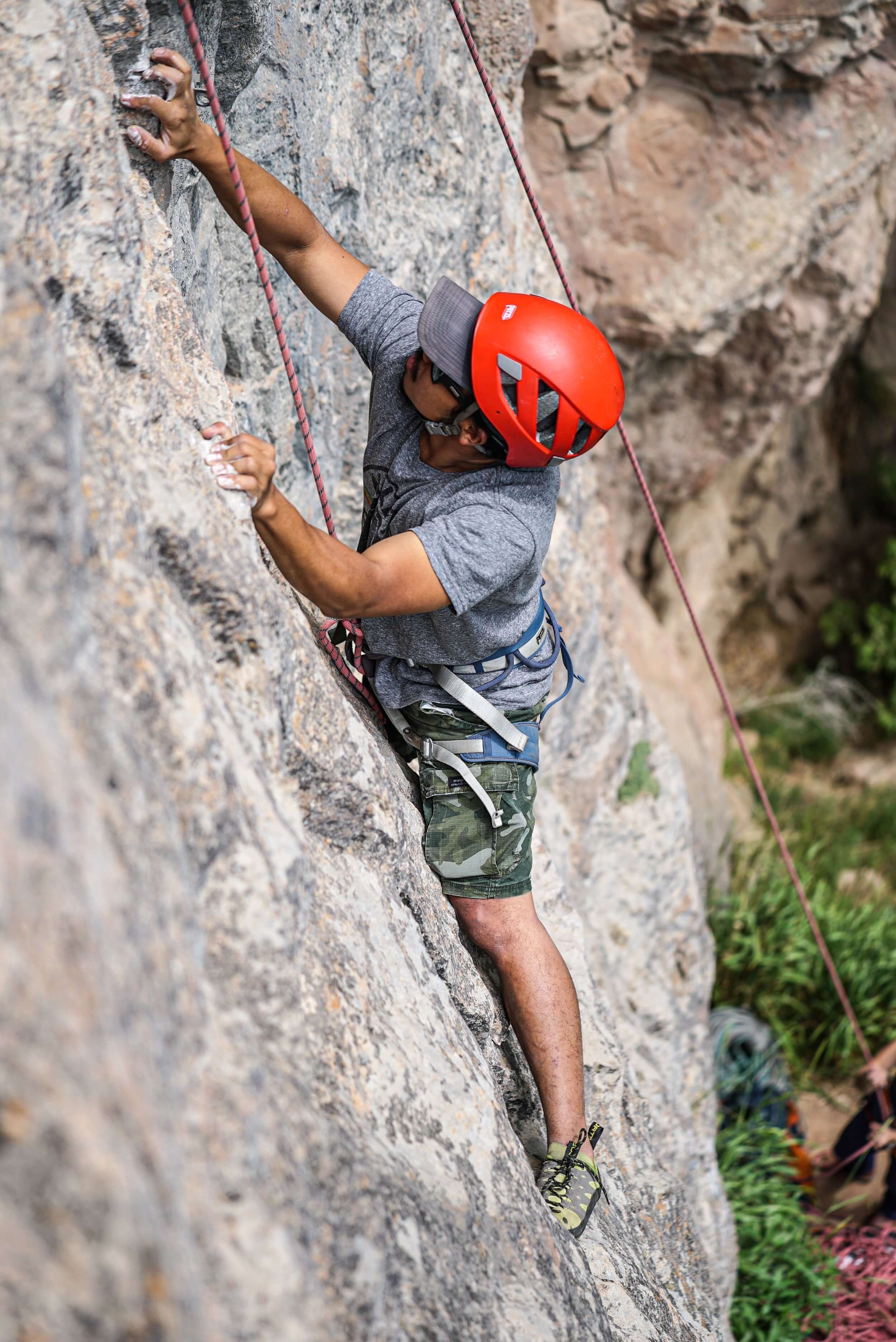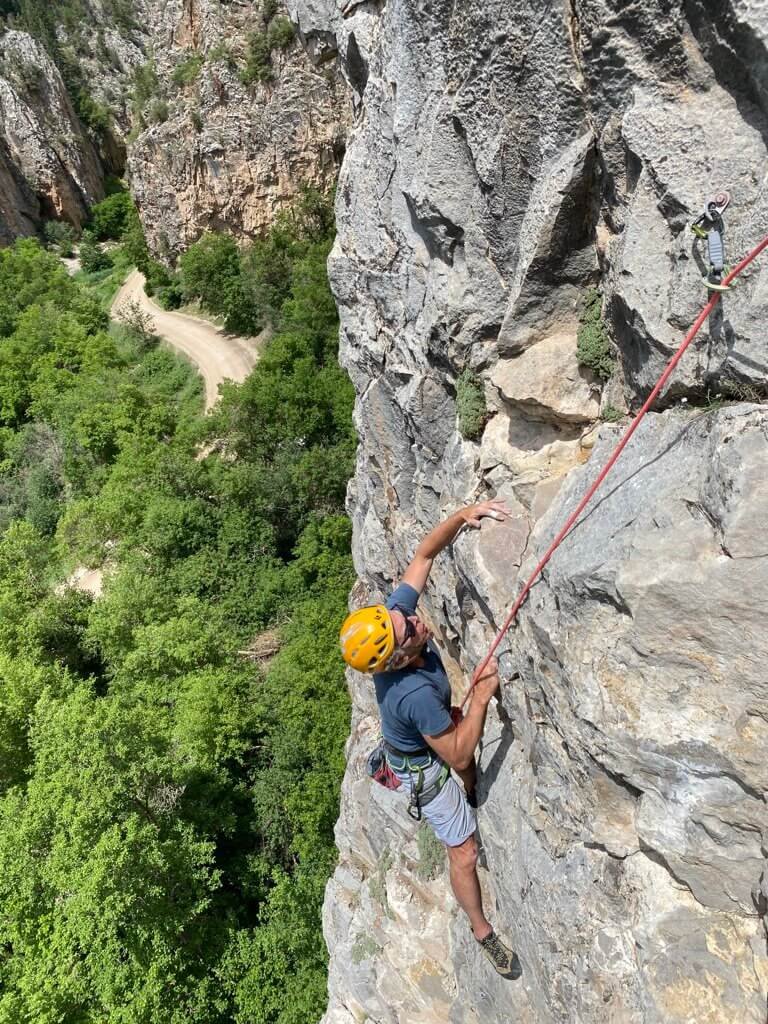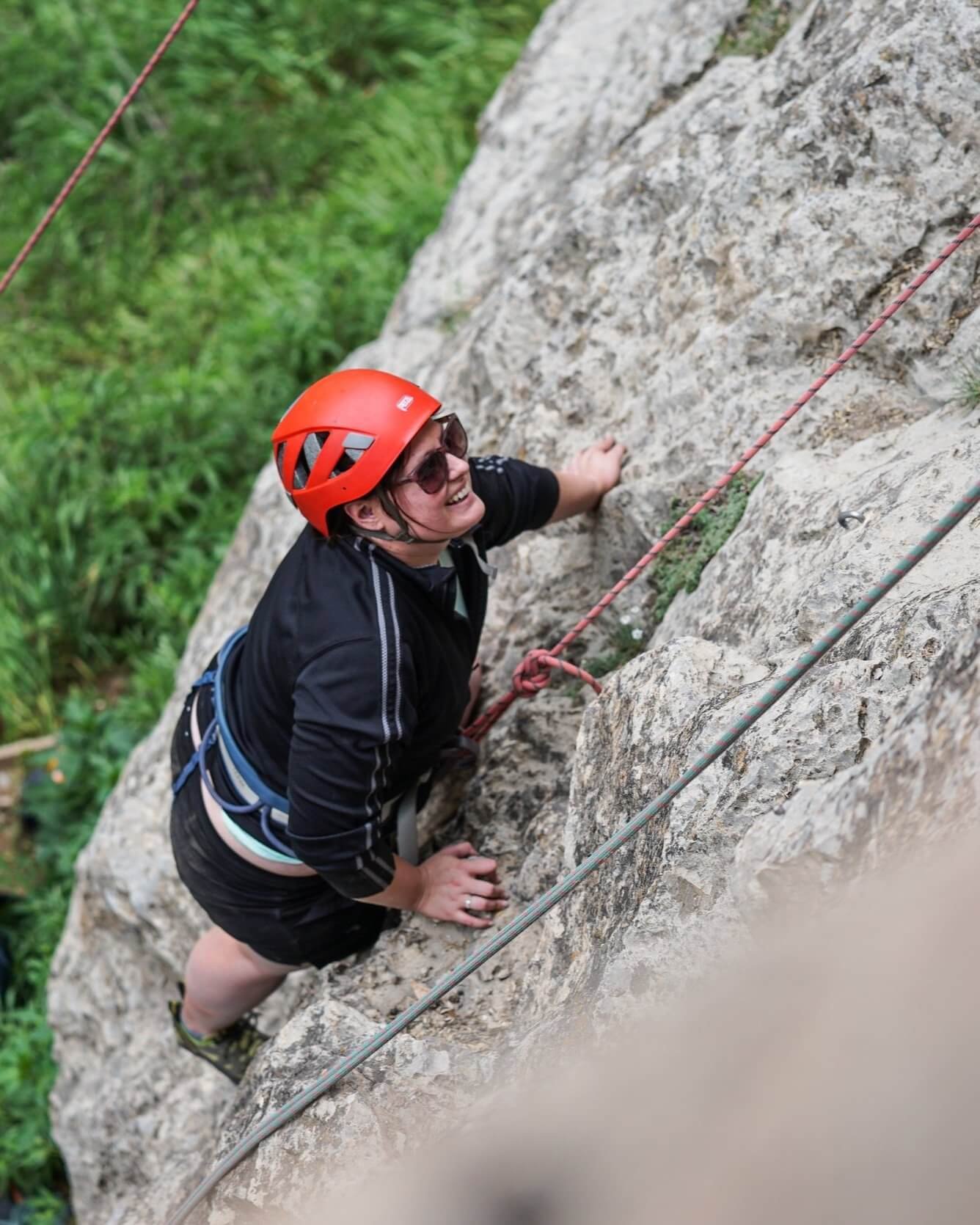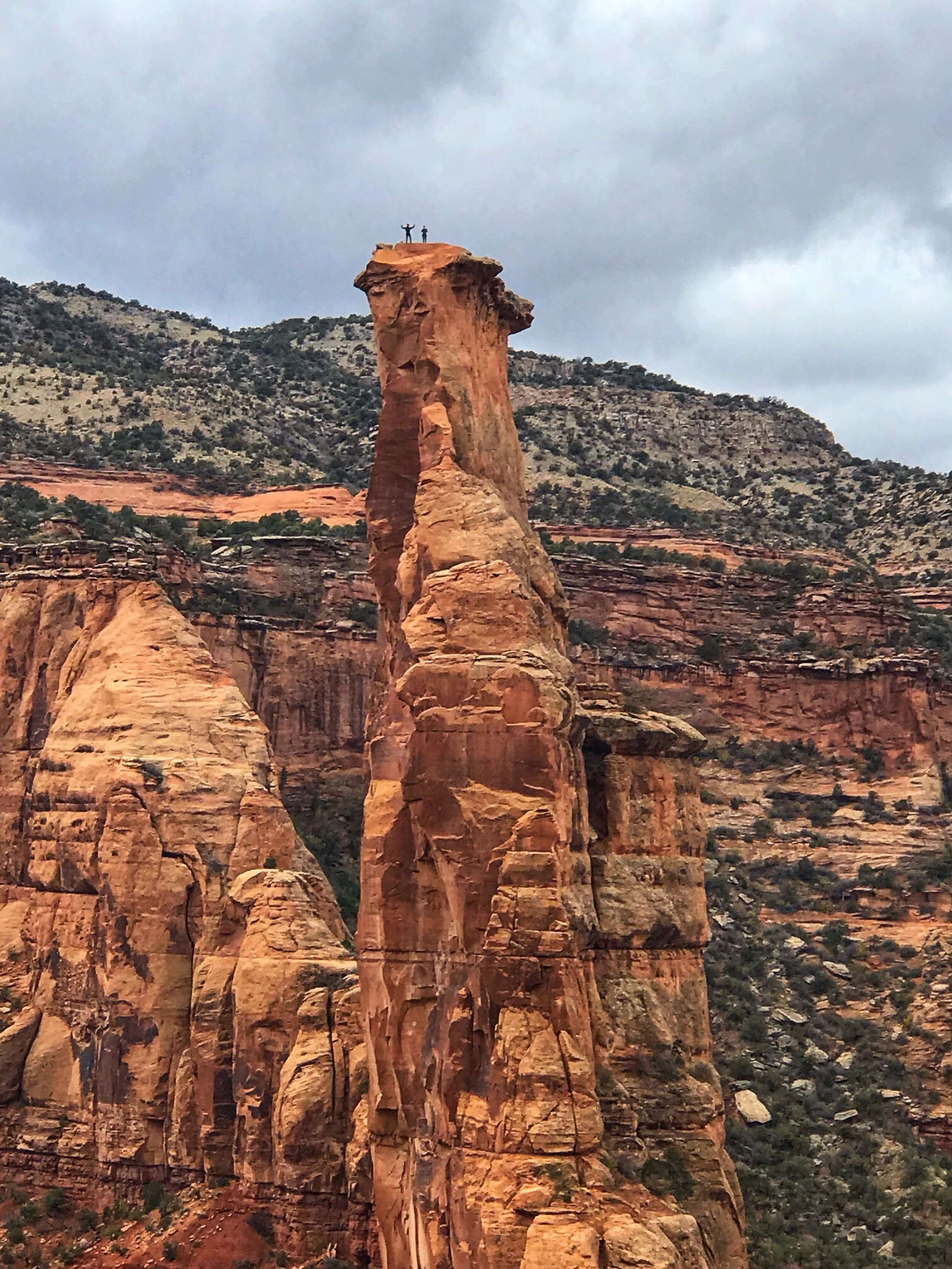
Sport Climbing in Rifle Mountain Park
Nestled amidst the stunning peaks of the Rocky Mountains, Rifle, Colorado is a mecca for sport climbers seeking some of the world’s most challenging rock climbs. In addition to these incredibly challenging steep rock climbing routes, Rifle is also home to lots of awesome moderate routes, with a network of over 500 established routes, it is the perfect spot for climbers of all ability levels wanting to break through climbing plateaus. Skyward Mountaineering specializes in coaching and helping unlock your full rock climbing potential and hone your movement skills. Whether you’re an an advanced rock climber looking for a reliable partner to support your goals and provide expert coaching or a curious beginner eager to experience the thrill of rock climbing, we offer guided rock climbing in Rifle designed to match your unique aspirations.
Single pitch sport climbing, with routes ranging from 5.8 to 5.14
Previous indoor rock climbing experience recommended
Mid April - mid November
Limestone rock climbing in an idyllic canyon
-
Rock climbing in Rifle Mountain Park is a world-class limestone destination, with multiple crags spread throughout the canyon. Walls vary in steepness from overhanging caves to technical vertical faces and despite it’s challenging reputation there has been significant new route development of moderate grades (and it turns out these routes are really high quality too!). Rock climbing in Rifle is 100% Type 1 Fun and Skyward Mountaineering guides enjoy having this incredible destination in our backyard on Colorado’s Western Slope. Our guides are talented rock climbers who provide expert coaching and support for climbers to surpass a plateau. Having trouble breaking into 5.12? Want to learn to lead outdoor sport climbing? Rifle is the perfect rock climbing destination for experienced sport climbers looking to progress in their climbing movement and newer climbers looking to be introduced to outdoor rock climbing.
-
Despite the popularity of Rifle as a world class rock climbing destination, Skyward Mountaineering is one of the few mountain guide services to offer guided rock climbing in the canyon. The routes are typically defined by complex climbing in steep terrain, demanding both power and endurance. Rifle Mountain Park hosts the largest quantity of 5.13 routes in North America! Rifle has earned its premier status for the quality and quantity of these challenging routes, though there are certainly plenty of moderate routes too. Our guides will introduce you to the standard classic routes as well as modern hidden gems.










